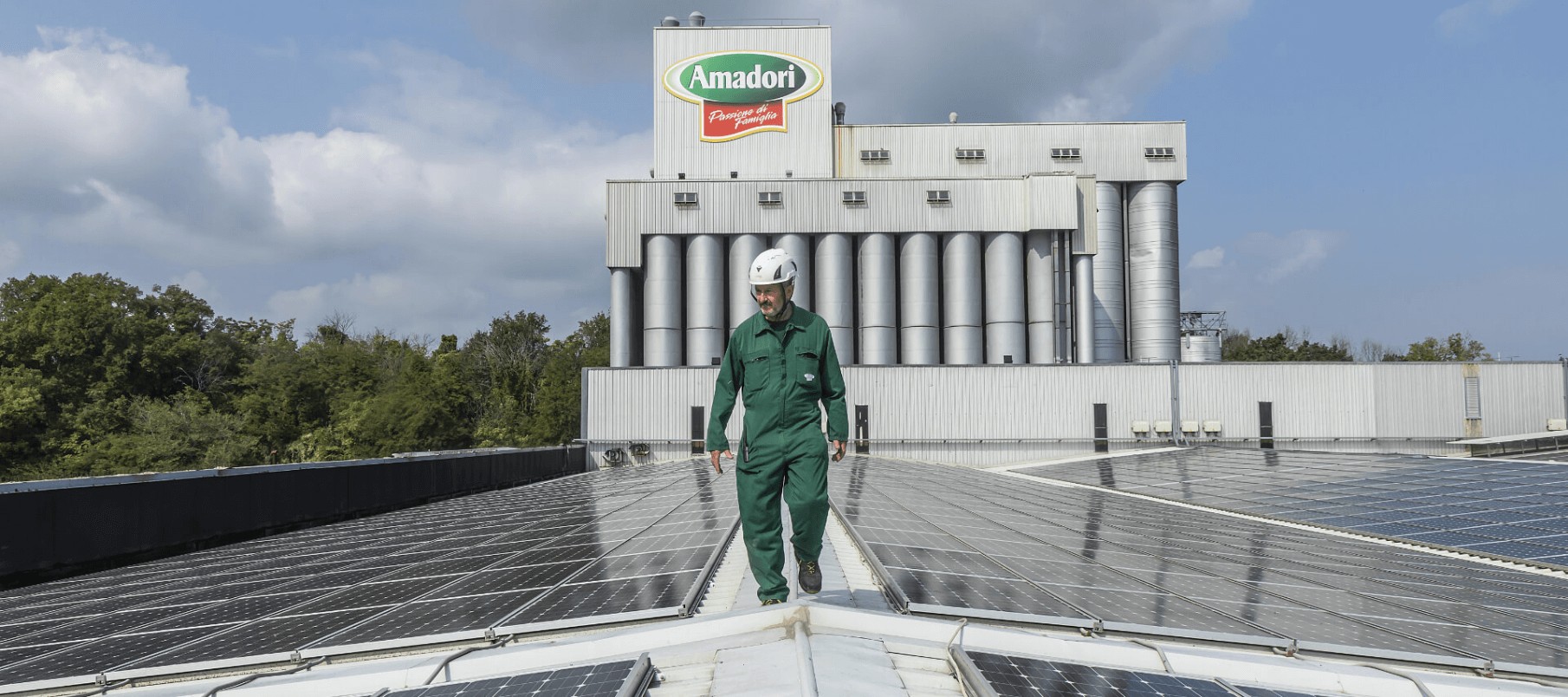Link copiato negli appunti
Energy sustainability and emissions
OUR COMMITMENT TO MITIGATING CLIMATE CHANGE
Amadori is aware of the environmental impact of the energy consumed by its production activity. This is why we have started to refine our procurement choices, directing our efforts towards consuming self-produced electricity and heat and, where purchased, from renewable sources.

TOWARDS SUSTAINABLE CONSUMPTION
Although, to date, most electricity consumed by Amadori comes from the grid, 22% of the total electricity consumed comes via self-produced energy from photovoltaics and owned co-generators. For purchased electricity, however, we aim to increase the percentage that comes from renewable sources.
The primary source of thermal energy generation is methane gas, which feeds the owned co-generators. We pay constant attention to optimising the heat recovery of the co-generators, and the results are monitored annually, aiming to maximise their performance.
GHG EMISSIONS
Amadori has been monitoring its greenhouse gas (GHG) emissions for several years, aware that effective reduction initiatives can only happen through correct mapping and reporting of what we release into the atmosphere. In particular, for several years, we have quantified our GHG emissions in the context of the CDP (the former Carbon Disclosure Project) questionnaire, which contains quantitative information relating to the company's emissions and reports the methods of managing climate change-related aspects.
As proof of our commitment to mapping and reporting our impacts in terms of GHG emissions and in compliance with the GHG Protocol, we have also calculated our Scope 3 emissions for several years now. These are emissions that are indirectly caused by company activity but whose emission sources are not under our direct control.
INCREASINGLY SUSTAINABLE TRANSPORTATION
Regarding transport, the process for increasing logistics sustainability is gaining strength because of the progressive transition towards new short and long-haul vehicles, which significantly cut emissions. To fulfil our commitment to equip ourselves with the tools to monitor our emission footprint, we embarked on a course of action to map the emissions related to logistics transport throughout the integrated supply chain.
An important part of a journey that will allow us to grow in an even more aware, responsible and attentive way.
Read the sustainability report
